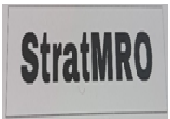Introduction
India’s western neighbour, Pakistan over the years has groomed a “terrorism industry.” It is an originator, financer, perpetrator, executor, and exporter of terrorism to India. Pakistan after repeated defeats in conventional wars with India realised that it is difficult for them to challenge India in symmetric warfare, so it resorted to unconventional and asymmetrical means of exporting terrorism to India to complete its unfinished agenda of ‘liberating’ Kashmir in the shadow of its nuclear deterrent.
Pakistan’s then Foreign Minister Zulfikar Ali Bhutto in the United Nations Security Council meeting in 1965 resolved to “fight for a thousand years”1 (Haqqani 2010) with India. Gen Zia ul Haq went a step further and formulated his sinister policy of “bleeding India through thousand cuts.” These became the basis of existence for Pakistan and then started a campaign of executing a bloodbath in India, especially in Kashmir.
Over the years, Pakistan’s “military-jihad complex” grew stronger and raised security concerns for India. Hence in such a backdrop, India has followed a robust counter-terrorism (CT) strategy and has had a fair degree of success. India’s armed forces have integrated and harnessed new technologies to make their operations more swift and preclude collateral damage and loss of lives. Though the world has been way ahead in using Unmanned Aerial Vehicles (UAVs), prominently known as drones, India has till now not exploited drones optimally. Given the security realities of India, it is necessary for India to build a strong drone arsenal and use them extensively to respond to sub-conventional threats like terrorism. The article aims to answer the following questions:
- How can drones be used in CT/CI operations?
- What are the advantages of using drones in CT?
- What are the implications of the use of drones CT?
- Why has India not resorted to the kinetic use of drones till now? Is it a doctrinal issue?
- What challenges can the Armed Forces encounter in the use of drones?
USE OF DRONES IN CT/CI OPERATIONS
Rapid changes in technology have highly impacted the equations in combat since time immemorial. The side that wields better technology unquestionably has an edge in the conflict. Drones can prove to be a game changer in counter-terror operations. Till now, the use of drones in India for CT operations remains largely under-exploited. Drones can be efficaciously used in a number of ways in a conflictual situation.
It is said that all wars are wars of information. The one who possesses prior and better information about the adversary has an upper hand. Drones can be used for intelligence gathering, surveillance, and reconnaissance. Drones fitted with high-definition and infrared cameras can successfully gather information about terrorists and their hideouts. This has been very effectively displayed by the USAF where a drone was used to collect intelligence on the compound in which Osama bin Laden (OBL) stayed. Though these drones did not kill OBL but they “played a key role in finding him, preparing the way for the raid that got him, and conducting the raid itself.”2 (Wilson Center 2011)
These drones can be integrated with AI and Deep Learning tools to understand the patterns of terrorists’ movements over time and help in predicting such behaviors and increase the situational awareness of a foot soldier on the battlefield. This can keep such counter-terror operations swift and clean with minimum damage and loss of life for the armed forces, as well as civilians.
Hence drones can play a critical role in reconnaissance, providing details of topography, and a bird-eye view of the conflict zone. They can map the terrain and provide inputs to the soldiers in advance before they put boots on the ground, and more so HUMINT is not available. They can provide effective “air cover for ground forces and additional resources for overstretched air forces.”3 (Yayboke and Reid 2022)
Microdrones of 0.10 kg that can fly a maximum of up to 250 meters4 (Bhattacharjee 2015) can be used for surveillance in buildings. Such drones can be really helpful in 26/11-like situations. They can scout in buildings, becoming ‘eyes and ears’ of the counter-terror forces by providing them with the exact location, number of terrorists, and type of weapons with the terrorists. Such drones can also relay information about the hostages, if any, and hence can help in the planning and execution of RSTA (Reconnaissance, Surveillance, and Target Acquisition) operations in such a manner as to reduce the loss of civilian lives as well as that of uniformed personnel.
Drones can be upgraded with Internet Packets Sniffing Technology which can be used to track conversations and tap the lines of communication to gain an advantage over their next steps. Drones can also be upgraded to integrate Electronic Warfare technology which can isolate the terrorists by jamming their communications equipment.
Drones can also play an important role in combat situations by engaging with the target. They can be integrated with technologies to acquire the target and eliminate them through the use of “mini bombs,” low-impact missiles, or precision-guided munitions. Such drones are extensively used by Israel to kill high-value targets that ground forces either cannot reach or the risk ratio is very high and using air force to conduct airstrikes can cause high collateral damage.
Drones can also become handy in monitoring post-operation situations and maintaining law and order in conflict-prone areas, especially in states like Jammu and Kashmir where the situation remains volatile post-operation. Drones can also help armed forces in damage assessment once the encounter or surgical strike is over, especially in cross-border operations like post-Uri attacks surgical strikes, or the Balakot strikes.
Drones can be used in perimeter protection of administrative and operational bases and can be efficiently used for convoy protection (to avoid situations like Pulwama) In counter-terror operations, drones can assist in movement sensing, posture recognition, facial recognition, etc. Integrating them with AI will make these processes even more beneficial and would make their performance highly optimised. It can potentially make drones more independent and autonomous in their operations as against drones of today which play a complementary role to principal combat warriors/platforms.
ARE DRONES A TRUMP CARD? - THE ADVANTAGES OF A DRONE
Unmanned Combat Aerial Vehicles provide an edge as they can “ kill, disable, support fighters on the ground, destroy, harry, hinder, deny access, observe, and track.”5 (Hazelton 2013) Drones are low-cost solution ‘force multipliers’ which can deliver results with low collateral damage, high accuracy rates, and complete D4 i.e. “dull, dirty, dangerous and deep” operations6 (Pant 2020) with relative ease dodging the Air Defence and Radar systems of a country. This has been amply demonstrated by both sides in the ongoing Ukraine War. They also keep the threshold of the conflict low which allows room for manoeuvre to the forces and political masters giving them more freedom and scope due to negligible human costs involved.
The employment of drones by the US forces shows that they have a ‘twin-psychological impact’ by raising the morale of armed forces with successful operations with negligible human costs involved and on the other hand breaking the back of terrorist organisations by killing their key leaders who are replaced by inexperienced leaders who commit miscalculations. Drones also destroy their sanctuaries and make their communications difficult with low-risk and highly accurate targeting methods which take their morale to nadir. India can learn from this and can replicate such measures in the Valley, especially to kill the hardened foreign terrorist, based on precise and real-time intelligence.
Drones allow the projection of power without projecting our vulnerabilities. Drones can also be used to defend critical infrastructure like gas pipelines, power distribution plants, and military establishments from terrorist attacks. Hence drones come with a number of advantages and can serve the forces in a number of ways for the good. But every weapon comes with some implications, which must be taken care of while using it.
WHY HAS INDIA NOT USED DRONES TILL NOW IN CT/CI OPS?
The three services have been operating drones since the late 1990s, now for almost 30 years. These MALE UAVs were acquired from Israel. But till now India has not exploited the full potential of drones as a platform, especially in military operations other than war.
The MALE UAVs that the armed forces operate are used for intelligence and surveillance and do not have combat capabilities. India has relied heavily on ground forces, human intelligence networks, and other combinations of technologies and strategies to combat terrorism and insurgencies as per operational requirements and the nature of threats.
The use of drones in CT/CI operations is a very complex decision to make with a number of factors impacting it, including strategic objectives, operational feasibility, technological capabilities, and legal considerations. While the Armed Forces, and lately the CAPFs, have used UAVs and quadcopters for ISR roles, India has not used drones, for kinetic application of force in CT/CI operations as the use of drones would mean using lethal kinetic force on our own soil and against our own people. Indian Armed Forces follow the principle of minimum use of force in internal security operations.
According to the Indian Army’s Land Warfare Doctrine of 2018, “When requisitioned to deal with internal threats and challenges, the Indian Army will prosecute operations in a firm manner using the principle of minimum force, focussing on winning hearts and minds.”8 The Indian Airforce Doctrine IAP 2000-22 also states that “Despite significant capabilities, the use of kinetic options in internal security has limitations with respect to accurate intelligence and collateral damage. These have grave ramifications with respect to civilian casualties and political outcomes. Therefore, such operations can only be undertaken with a clear mandate from the Government.”9
Hence the objective of the Armed Forces is to bring the disaffected and indoctrinated people, especially the youth, who support, abet, or use terror; back to the mainstream by winning their hearts and minds. But this does not close the opportunity for using UAVs for CT/CI operations, but only calls for the use of such kinetic capabilities only with great restraint and care. India has used aerial kinetic force in the past in 1961 in Aizwal in response to ‘Operation Jericho’ of Mizo National Front.10 (Mazumdar 2022) In more than six decades, technology has improved which has increased precision and accuracy. So drones (both kinetic and non-kinetic) can become very helpful in CT/CI operations. India resorted to the use of even manned aerial kinetic force in Balakot airstrikes across the border with due care, precision, and with an aim of minimum collateral damage. In such sub-conventional conflict, principles of “jus ad vim” must guide decision-makers to use this kind of lethal force.
REMAINING CHALLENGES
Due to lowered risk thresholds and room for maneuverability with precision strike capabilities, India must develop varied capabilities and doctrines for the use of drones in terrorism-affected areas, including kinetic employment in certain situations, where the final decision is always taken by humans. As the USA’s use of drones has shown, civilian casualties remain high, so India must use this power with restraint, as the stakes are high for India in the long term with the area of operation being her own land as against the USA which primarily used drones on foreign soil. The overall aim is to protect the citizens and they must not be harmed under any circumstances.
The concerns regarding drones have increased as technology has proliferated into the hands of terrorists. Due to ease of access, low cost, and uncomplicated operations, the threat of aerial terrorism has increased. Terrorists have got their hands on this dual-use technology and they are increasingly using this to spread terror. They have replicated spectacular attacks in Saudi Arabia on Aramco oil fields in 2019.11 (AL JAZEERA 2019) India has also not remained untouched by it. In 2021, Jammu AF Station was attacked by an explosive-laden drone.12 (Livemint 2021)
These attacks call for the development of Counter-Unmanned Aerial Systems, both in conventional as well as CT/CI domains. “C-UAV systems work on the principle of detection–identification–engagement or neutralisation. In military parlance, this is also known as the DIE concept.” Detection involves the use of Radio Frequency, Electro-Optical, Infra-Red, or acoustic methods. Identification can be done by understanding the flying patterns, communication methods, and shapes of drones. Integration of AI, ML, and Deep learning at this stage may prove to be very beneficial. In engagement, both soft kill and hard kill methods can be employed.13 (Upadhyay 2023)
It is obvious that we cannot completely eliminate terrorism until the source of terrorism, Pakistan wishes to do so; we can at best ‘manage’ this threat of terrorism. Unmanned Aerial Vehicles (UAVs) can help in managing this sub-conventional threat with low costs but high precision for the armed forces. Hence India must take the lead in the opportunities available, acquire the equipment, train the soldiers, evolve suitable doctrines, and use the immense capabilities that drones provide for counter-terrorism operations.
References
- Haqqani, Husain. 2010. Pakistan: Between Mosque and Military. N.p.: Brookings Institution Press.
- Wilson Center. 2011. “In bin Laden’s Death, CIA Drones Played Their Part.” Wilson Center. https://www.wilsoncenter.org/article/bin-ladens-death-cia-drones-played-their-part
- Yayboke, Erol, and Christopher Reid. 2022. “Counterterrorism from the Sky? How to Think Over the Horizon about Drones.” CSIS BRIEFS, (May).
- Bhattacharjee, Dhrubajyoti. 2015. “Unmanned Aerial Vehicles and Counter Terrorism Operations.” New Delhi, India: Indian Council of World Affairs. https://www.icwa.in/show_content.php?lang=1&level=3&ls_id=1835&lid=837&kval=drones.
- Hazelton, Jacquiline L. 2013. “Drones: What Are They Good For?” USAWC Press. https://press.armywarcollege.edu/cgi/viewcontent.cgi?article=3019&context=parameters
- Pant, Atul. 2020. Aerial Drones in Future Wars: A Conceptual Perspective. N.p.: Manohar Parrikar Institute for Defence Studies and Analyses.
- Kreps, Sarah, Paul Lushenko, and Shyam Raman. 2022. “Biden can reduce civilian casualties during US drone strikes. Here’s how.” Brookings Institution. https://www.brookings.edu/articles/biden-can-reduce-civilian-casualties-during-us-drone-strikes-heres-how/.
- “Land Warfare Doctrine 2018.” 2018. p 3. https://www.ssri-j.com/MediaReport/Document/IndianArmyLandWarfareDoctrine2018.pdf.
- Doctrine of The Indian Air Force IAP 2000-22. p. 42
https://indianairforce.nic.in/wp-content/uploads/2023/01/2MB.pdf.
- Mazumdar, Jaideep. 2022. “5 March 1966: The Day IAF Fighters Dropped Bombs On Indian Citizens On The Then Government’s Orders.” Swarajya. https://swarajyamag.com/politics/5-march-1966-the-day-iaf-fighters-dropped-bombs-on-indian-citizens-on-the-then-governments-orders.
- AL JAZEERA. 2019. “Houthi drone attacks on 2 Saudi Aramco oil facilities spark fires | Houthis.” Al Jazeera. https://www.aljazeera.com/economy/2019/9/14/houthi-drone-attacks-on-2-saudi-aramco-oil-facilities-spark-fires.
- Livemint. 2021. “Drone attack at Jammu air base: NIA at IAF station, FIR under UAPA. Details.” Mint. https://www.livemint.com/news/india/drone-attack-at-jammu-air-base-nia-at-iaf-station-fir-under-uapa-what-we-know-so-far-11624796635650.html
- Upadhyay, Akshat. 2023. “Counter UAV Systems For India.” Indian Aerospace and Defence Bulletin. https://www.iadb.in/2023/01/28/counter-uav-systems-for-india/














































